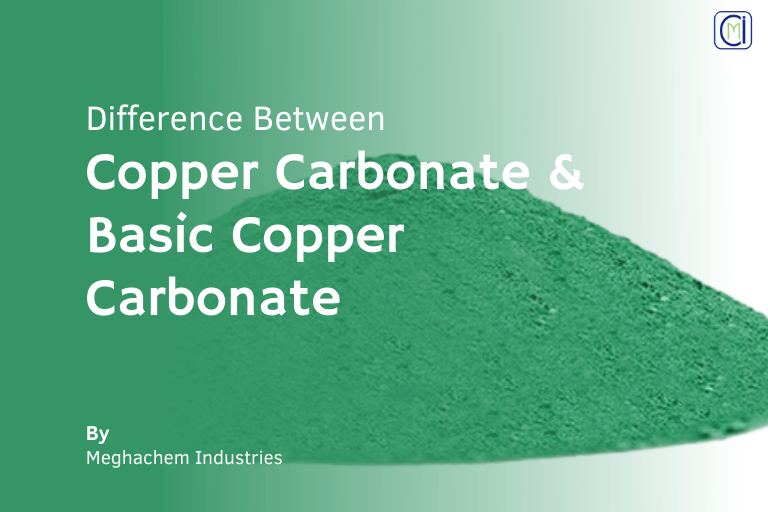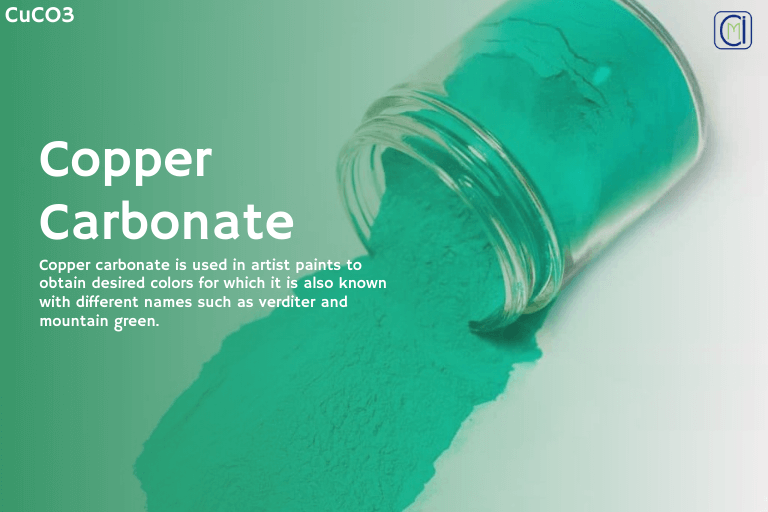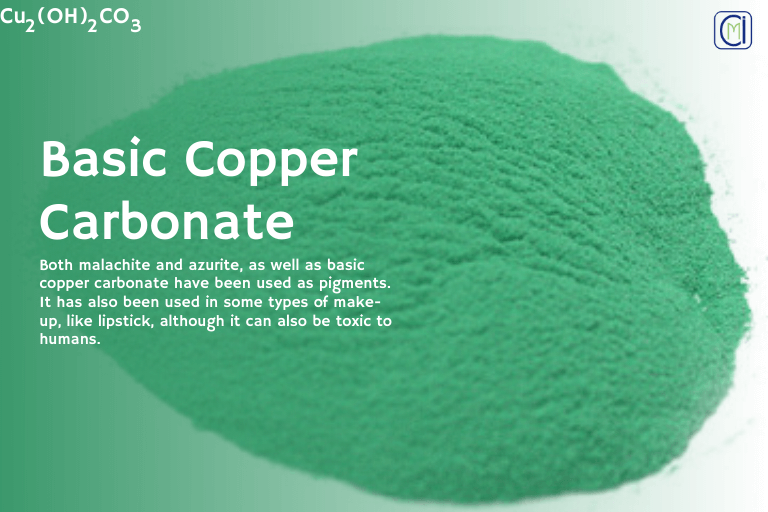
Difference Between Copper Carbonate and Basic Copper Carbonate
Copper Carbonate and Basic Copper Carbonate are often confused with each other. Chemically both the chemical compounds are different. Copper Carbonate is CuCO3, and basic Copper Carbonate is Cu2(OH)2CO3
Let us get more details about them.
What is Copper Carbonate?

Copper Carbonate is a neutral compound with the chemical formula CuCO3. Therefore, it is also known as Cupric Carbonate. The Copper ions in the compound are available in a +2 Oxidation state which allows it to be reactive to water or moisture.
Therefore, the mixture is easily convertible to other compounds on heat, also referred to as Calcination.
The preparation is difficult and is a reaction between Sodium Carbonate and Copper Sulfate. In the preparation method, the basic Copper Carbonate is heated in a Carbon Dioxide Atmosphere to give a grey powder as the output, which is the Copper Carbonate.
The final product is very stable due to the partial pressure created by the Carbon Dioxide in the environment.
The stability can be maintained for months in a dry atmosphere. Once the compound starts to decompose, it gives Copper Oxide one of the significant products.
What is Basic Copper Carbonate?

The basic Copper carbonate is found in blue and green coloured crystalline forms known as Azurite and Malachite.
They have been widely used in making gemstones. Basic Copper Carbonate is subjected to different refining processes as pigments in paint. Basic Copper Carbonate can be developed by combining Sodium Carbonate and Copper Sulphate in an aqueous form.
The other way of deriving Copper Carbonate is using Copper Sulfate with Sodium Bicarbonate. It has many applications owing to its vibrant colors.
Basic copper carbonate is also used as copper chrome catalyst manufacturing.
Difference Between Copper Carbonate and Basic Copper Carbonate
Here are the significant differences between the two compounds
- Chemical composition: Copper Carbonate contains Copper ions and carbonate anions and has the formula CuCO3. Basic Copper Carbonate contains carbonate ions and hydroxide ions in addition to the copper ions. The formula is Cu2(OH)2CO3.
- Appearance: Copper Carbonate is derived in powder form in grey color. Basic Copper Carbonate can be derived in two different colors: blue and green.
- Preparation: Sodium Carbonate and Copper Sulfate combination give Copper Carbonate. For basic Copper Carbonate, heat is applied to Copper Carbonate in the Carbon Dioxide Atmosphere.
- Uses: Copper Carbonate is used in the timber industry as a wood preservative and other products. It is also used in making pigments and feed additives. Basic Copper Carbonate is primarily used in paints as pigments for its varied color. It is also used in gemstones.
Summary
Though both the chemical compounds may sound the same, they are two different compounds with different compositions and uses.
Meghachem is one of the leading manufacturers of basic copper carbonate as well as copper carbonate for various application. We follow international standard procedures to manufacture pure and high-quality Copper Carbonate. Contact us today to get the best quality Copper Carbonate in bulk at affordable rates.
Frequently Asked Questions About Copper Carbonate:
Theoretical copper carbonate is 71.94% CuO (sourced by a mix of copper carbonate and carbonate hydroxide). CuO is 79.9% copper and 20.1% oxygen. Thus, we would expect Cu metal to be 57.5% (in a theoretical material).
May be harmful if inhaled. Inhalation of dust or fumes may cause irritation of the nose, throat and upper respiratory tract. Symptoms may include coughing, choking and wheezing. Sign and symptoms ingestion may cause gastrointestinal irritation, nausea, vomiting and diarrhea.
Copper carbonate always stays as copper carbonate hydroxide in the atmosphere. The copper powder reacts with oxygen, forming an opaque coating of copper oxide that tends to be green or bluish-grey in color. This layer is termed the patina. Hence, the colour of copper carbonate is green.
